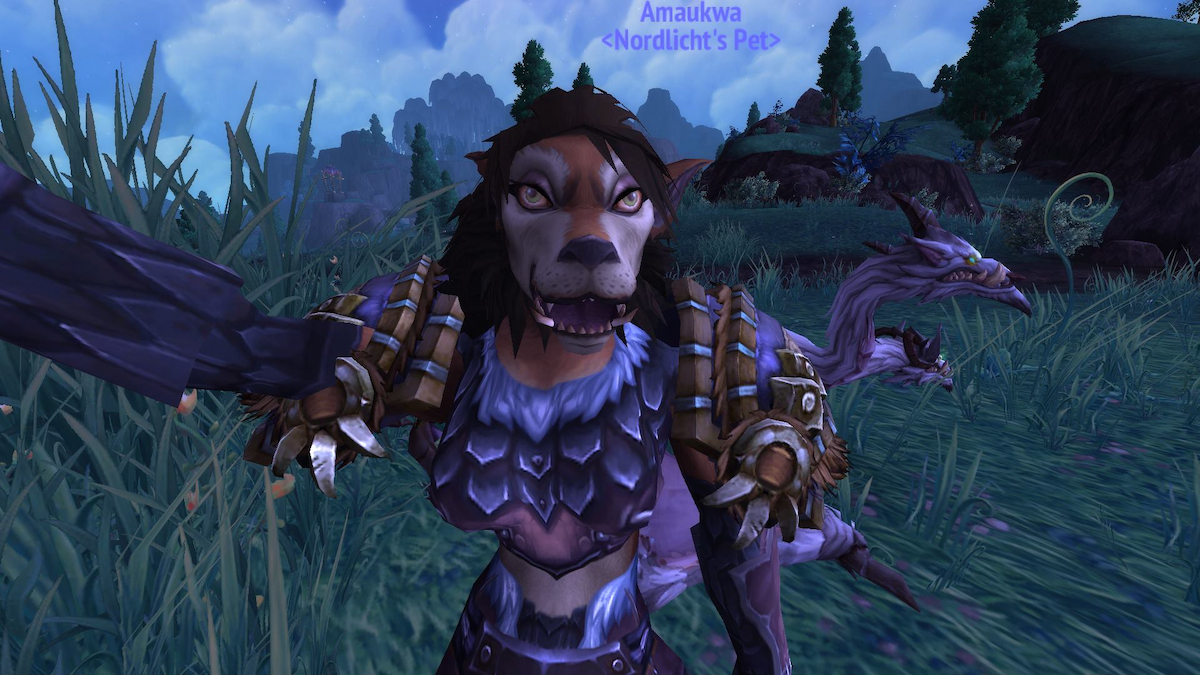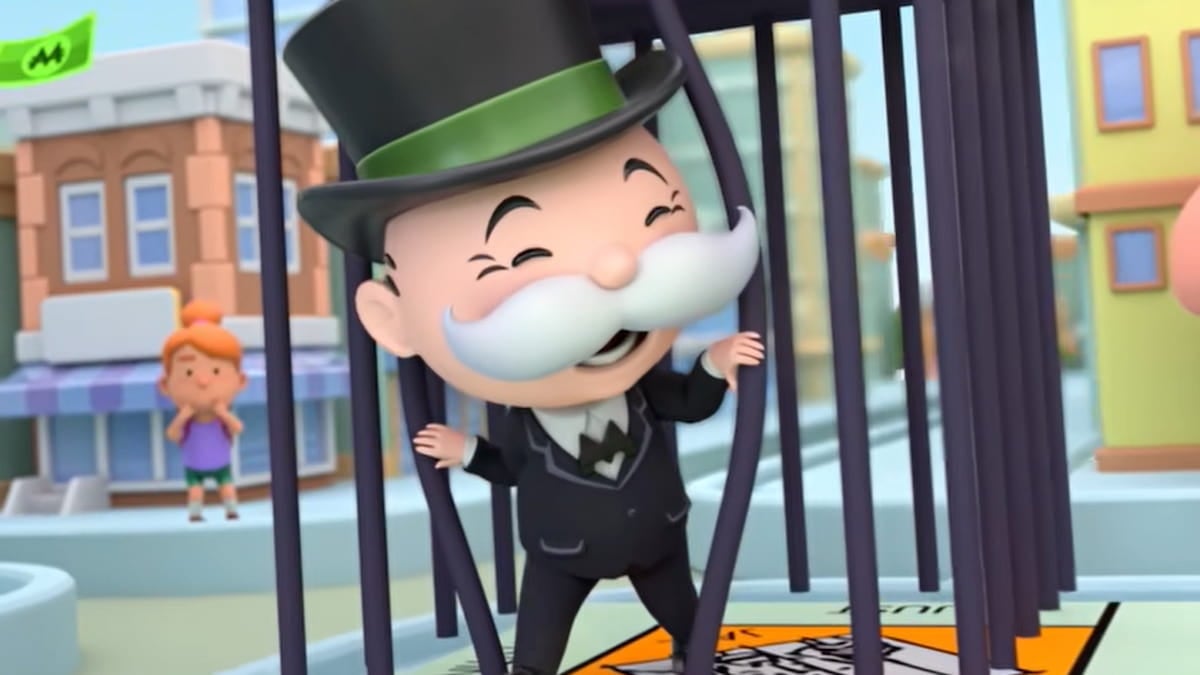
Gather round, lads, it’s full disclosure time: I didn’t play Sam & Max Season 1. I didn’t play Sam & Max Hit the Road. I’m only perfunctorily acquainted with the entire adventure genre. I have failed you.
This, along with my crippling insecurity and stunted legs, can be blamed on my parents — I wasn’t born in time to have developed higher-level critical thinking skills necessary to play adventure games during their 80’s heyday.
Much like old people, these adventure games of yore command a certain amount of respect, the Holy Grails of an age long gone. A game where critical thinking, problem solving, and character interaction take precedence over headshots and homophobia? How quaint, yet sublimely mystical and arcane!
However, like a modern-day sin-eater, I have atoned for the shortcomings of my father, dutifully playing through the debut of Sam & Max Season Two, the follow up to Telltale’s successful foray into episodic content.
So, did Sam & Max Episode 201 live up to my lofty, perhaps inflated, expectations? Or am I too green to recognize the sweet, subtle beauty of the adventure genre, upon which my profane eyes had not hitherto alighted? Just in case, I’ve also roped in Reverend Anthony — who has played every other Sam and Max game ever created — for a second opinion.
Sam & Max Episode 201: Ice Station Santa (PC)
Telltale Games
Released November 8, 2007

For you whippersnappers that aren’t familiar with Sam & Max, here’s a quick breakdown: Sam is a dog, and Max is a rabbit, and they are freelance policemen. Max also happens to be the President, but that’s largely irrelevant. While each episode’s narrative is completely self-contained, there is an over-arching plot tying all of them together. As for Ice Station Santa, it seems like the result of The Nightmare Before Christmas and Dickens’ A Christmas Carol fused together: Santa Claus has gone crazy, and it’s up to Sam and Max to save Christmas by righting a few unknowingly committed wrongs. It’s hard to be more specific without spoiling it, as there’s not just a whole hell of a lot narrative here — don’t forget that this is only the first episode of a longer series. A capable player could probably play through this at a leisurely pace in about 4 – 6 hours. I managed to play through it in one sitting, interrupted only by food and class.
Sam and Max made a graceful jump into 3-D with Season 1, and nothing’s really changed in Season 2 — the art style is classic, the colors are vibrant, and the animations are fluid and smooth. There are, however, some new locales to explore, including Santa’s Workshop and Stinky’s Diner. Old haunts such as Sam and Max’s office and Bosco’s Inconvenience Store make up the rest of the game.
As far as the gameplay’s concerned, it’s not exactly neurosurgery. While the point-and-click genre has always had relatively simple game mechanics, Telltale have streamlined the process even further. While most adventure games incorporate a few different actions available for any particular item — observe, use, listen, fellate, etc … — Sam & Max just wants you to point, and then click. If Sam can use it, he will. If not, he’ll just say something snarky about it. Period. At no point will the player ever use an item in the wrong place, or even more than once. It either works, or it doesn’t.
Initially, this means that solving puzzles is relatively straightforward — just stick item A in slot B and be done with it. No need to worry your little head about finding alternate ways to solve puzzles or advance the game. By the end of the game, however, I yearned for different ways to approach things. Because my thought process didn’t line up exactly with that of the game developers, I found myself stuck on the penultimate puzzle for a substantial amount of time. I won’t tell you how long because it’s embarrassing.

That being said, I hesitate to call Sam & Max hard. The puzzles aren’t self-contained, meaning that you’ll have to travel back and forth between different areas to gather enough items to progress, but it’s never tedious or overly-complex. It’s certainly challenging and invites the player to use critical thinking skills, and the solutions to problems can be rather vague and esoteric, but it’s not hard. In fact, puzzles seem insultingly obvious, but only after you’ve solved them. More than once, the team at Telltale made me feel rather silly and dense, but in a chummy, adorable, Socratic kind of way.
As someone entirely unfamiliar with the adventure genre, it was strange that there were no real “rewards” for solving puzzles — no points, or sweet armor, or a “Mission Complete!” screen. The reward is wholly intellectual, tied up in feelings of personal accomplishment and being allowed to progress further in the game. Often times, the end goal of any given scenario is immediately obvious — the question is never “what do I do?” but rather “how do I do it?”
I often found myself working backwards from the end of a puzzle. For example, at one point near the end of the game, I realized that I had to get a particular item from Stinky, the owner of a diner near Sam & Max’s office. In my head, I had already planned out how to use that item which I knew would set off a (rather long) chain of events allowing me to finish the game. Unfortunately, it took me like four millenia to figure out how to get said item, effectively halting my grand ideas in their proverbial tracks. Finding that one action to serve as a catalyst to propel myself into the next segment of the game was like a personal victory over those lovable, ingratiating Telltale chaps. This is where the most fun in Sam & Max is derived — gathering clues, plotting out a course, and then setting it all in motion, like an adorable Rube Goldberg machine.
If you can’t tell, I’m pretty worthless as an adventure gamer and spent a lot of time stuck — knowing exactly what to do, but not how to do it. This wasn’t all bad, however, as it gave me a chance to explore in minute detail the various locales of the Sam & Max-iverse. By extension, it gave me a lot of time to revel in one-liners and hilarious dialog. When I spoke with Telltale at PAX, I had this to say about the game’s humor: “The jokes are funny without being over the top, clever without being pedantic, and the slapstick is endearing, but not stupid.” I stand by this now, as well — the writing is spot-on, and I literally laughed out loud several times. Literally.
Interestingly, it occurred to me that each section of the game had an accompanying brand of raunchy humor: the Office was home to allusions to Season 1 and fan service; the dialog at Bosco’s rife with sexual innuendo; Stinky’s serves as a soapbox for social critique and not-so-subtle jabs at Condi Rice and Tricky Dick Cheney; and finally, Santa’s office is a booze-soaked, drug-addled Christmas fest, where Christmas spirit comes in a bottle.

Another feature touted by early press for this game was the inclusion of new gameplay features designed to break up the repetitive pointing and clicking that is so indicative of the point and click genre. These new “features” really just mean a few mini-games thrown into the mix for good measure. The mini-games are twitchier than the majority of the game and do, in fact, break up the gameplay for a nice change. They also change the reward trope that I mentioned earlier. Instead of “solve this puzzle and take joy in your accomplishment,” the game becomes “overcome this reflex-based challenge and win an item.” I suppose, in the grand scheme of things, this may be a small distinction, but the tone and the gameplay of the mini-games represent a stark contrast to the clue-gathering and character interaction of the rest of the game.
Unfortunately, they seem kind of shoe-horned right into the middle of the game. About the time I started feeling comfortable with how the game works, I get a bunch of mini-games thrown at me, one after the other. Where they really could have been useful was in the last stretch of the game, as the puzzles become more complex, when a break would have been appreciated instead of jarring. In a game that does so well at creating a seamless combination of puzzle-solving and narrative, the mini-games seem kind of ham-handed. It’s not that they’re bad, but they could’ve been better.
Ultimately, Sam & Max is a finely crafted, hilarious adventure game with classic gameplay whose moments of frustation are overshadowed by the moments of unadulterated joy that they eventually lead to. By the end of the game, the same, tired mechanics may seem a little stale and the conclusion seems a bit anti-climactic in that it’s just another puzzle, but the funny writing and the overall feeling of accomplishment more than make up for it. While I may’ve been unacquainted with Sam & Max before now, Episode 201: Ice Station Santa has made a fan out of me, and I’ll be hard-pressed to pass up the next installment.
Rating: 8.0
![]()
Unlike Orcist, I’m a huge adventure gaming fan. Sam and Max Hit the Road is my favorite adventure title of all time, and I loved Sam and Max Season One intensely. Going in to Season Two, then, I was curious as to how many of the flaws Telltale Games would improve upon from the first season.
You see, while Season One stands as one of the single most satisfying experiments in episodic gaming in, well, ever (episodes were released on time every damn month), it also had some problems — the most notable of them being that the puzzles just weren’t that hard.
Unfortunately, Season Two doesn’t really improve upon this problem. While only a few of the puzzles are outright easy, none of them will cause an experienced adventure gamer to scratch his or her head in pleasant confusion. The limited number of locations (as with Season One, there’s only about four or five different areas the player can travel to) means you’ll always have a pretty general idea of what you’re supposed to do and how you’re supposed to do it. The puzzles in Ice Station Santa aren’t necessarily easier than the ones in Season One, but they certainly aren’t any harder.

So, if the puzzles, number of locations, and length haven’t been changed, what has? Well, Sam can now run from object to object with a simple double-click, which will be useful to Season One vets who no doubt remember how excruciatingly slow Sam used to walk. A new hint system has been implemented, which should really only be used by total adventure novices: the hints are wonderfully subtle and in no way solve the entire puzzle for you, but I really have to wonder why they’d include such a helpful hint system in a game with such generally simple puzzles. I’d really like to see this hint system utilized in an episode with much, much more difficult puzzles, as it’s really quite pleasant to use. Finally, the Telltale guys saw fit to add in the action minigames Orcist spoke of to break up the gameplay. Orcist’s problem was that they were okay, but could have been better; my problem is that they’re present at all. In an episodic game whose running time doesn’t exceed four hours, I don’t really need to have the gameplay broken up. I buy Sam and Max for adventure gameplay, and that’s what I’d like. The twitch minigames aren’t awful, but they’re just not what an adventure gaming fan plays Sam and Max for.
However, I don’t want to give the impression that Ice Station Santa represents a nosedive for the Sam and Max episodes. The writing, for example, has actually managed to get even funnier — quite a feat, considering how funny the first season was. Overall, Ice Station Santa doesn’t really improve upon the lacking difficulty of Season One, and I could have definitely done without the unnecessary minigames, but the heart of the Sam and Max episodes is still there. The game is still awfully damn funny, the characters are interesting, and the puzzles are fun (if simple) to solve. If you enjoyed the first season, there’s literally no reason not to pick up Ice Station Santa as well. Just don’t expect anything drastically different. I definitely look forward to seeing what the rest of Season Two has to offer.
Rating: 7.0
Destructoid Review Final Verdict
Final Score: 7.5
Verdict:




